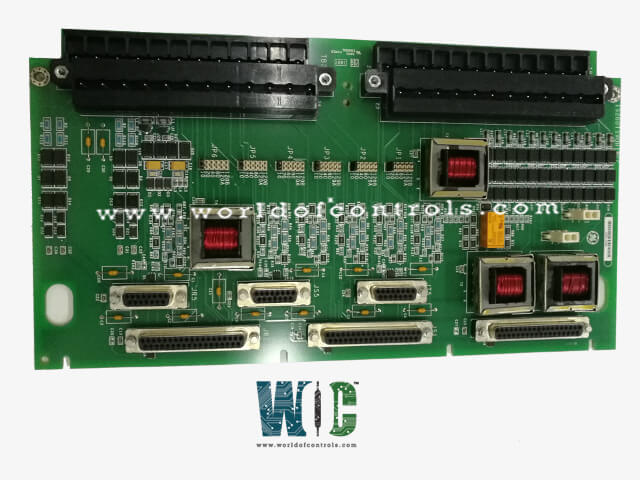
World Of Controls understands the criticality of your requirement and works towards reducing the lead time as much as possible.
IS200TSVAH1A - Servo Terminal Board is available in stock which ships the same day.
IS200TSVAH1A - Servo Terminal Board comes in UNUSED as well as REBUILT condition.
To avail our best deals for IS200TSVAH1A - Servo Terminal Board, contact us and we will get back to you within 24 hours.
Part No.: IS200TSVAH1A
Manufacturer: General Electric
Series: Mark VI
Technology: Surface mount
Availability: In Stock
Country of Manufacture: United States (USA)
IS200TSVAH1A is an Turbine Servo Terminal Board developed by GE. It is a part of Mark VI control system. The Turbine Servo Terminal Board functions in measuring valve positions using LVDTs. It incorporates two subsystems for this purpose. The subsystem provides four channels, including bi-directional servo current outputs for precise valve movement, LVDT position feedback for real-time monitoring, LVDT excitation to power the LVDT sensors, and pulse rate flow inputs for relevant valve control information. The other subsystem interfaces with up to six LVDT valve position inputs, providing the necessary excitation and enabling simultaneous measurement of multiple valve positions. Together, these functionalities ensure accurate and reliable control over valve positions, contributing to the efficient and safe operation of the turbine system.
The boards in the system are equipped with special control functions embedded within their firmware. These functions are designed to enhance the system's efficiency and responsiveness by allowing certain processes, like valve position control, to be executed locally on the board itself rather than relying solely on the central controller. This approach offers several advantages, particularly for time-critical operations.
One of the key benefits of utilizing these specialized control functions within the firmware is the ability to achieve rapid and precise responses. For instance, in cases where servo loops are involved, the dedicated servo board can execute these loops at an impressive rate of 200 times per second. This level of speed and responsiveness is essential for maintaining precise control over critical system components. The decision to offload specific control functions to the board level is strategic and serves various purposes:
World of Controls has the most comprehensive collection of GE Mark VI components. Please contact WOC as soon as possible if you require any extra information.
What is IS200TSVAH1A?
It is an Turbine Servo Terminal Board developed by GE
What happens if the regulator feedback signal goes beyond acceptable limits?
If the regulator feedback signal from the LVDT exceeds specified limits, a fault is generated. In cases where the associated regulator employs two sensors for redundancy, the faulty sensor is removed from the feedback calculation, and the good sensor is used to ensure accurate regulation.
Where can I find details about individual diagnostics related to the signals?
The toolbox contains detailed information about individual diagnostics. Operators and maintenance personnel can access this toolbox to investigate and analyze specific faults and health statuses of the signals.
Can the diagnostic signals be latched individually?
Yes, the diagnostic signals from the board can be individually latched. When a diagnostic signal indicates a fault or unhealthy condition, it remains flagged even if the condition later returns to normal. Latching allows for proper investigation and analysis of the issue.